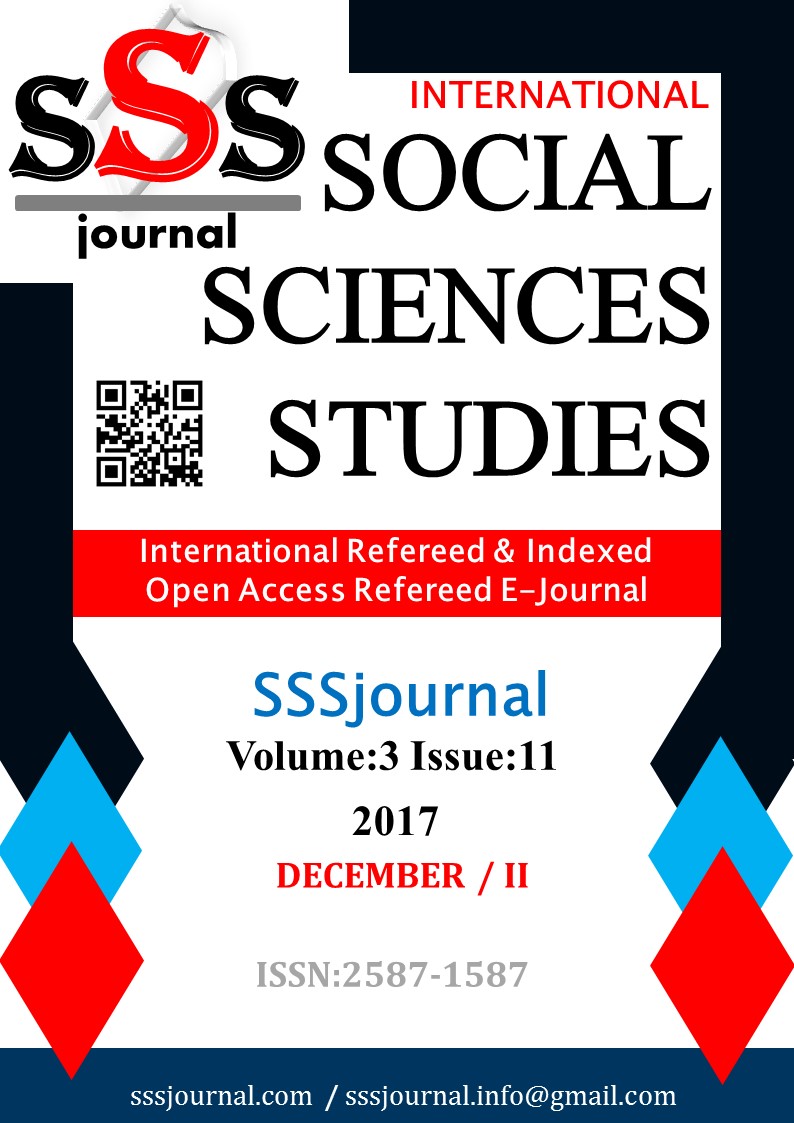Author :
Abstract
Maliyet-hacim-kâr analizleri yönetim muhasebesinin önemli bir aracıdır. Tahmini sonuçları belirlemek için kullanılmakta olan bu analiz bir işletmenin satış fiyatları, maliyetleri ve satış hacmi arasındaki ilişkilerin kârlılık üzerindeki etkilerini incelemektedir. Bir işletmenin maliyet-hacim-kâr analizlerinin yapılabilmesi için öncelikle maliyetlerinin bilinmesi gerekmektedir. Bu analiz, kâr elde etmek amacıyla kurulan otel işletmeleri için de çeşitli kolaylıklar sağlamaktadır. Otel yöneticileri, maliyet-hacim-kâr analizleri yardımıyla gelirler ile giderlerin hangi seviyede eşitleneceğini ve kâra geçeceğini hesaplayabilirler. Bu nedenle maliyet-hacim-kâr analizleri geleceğe ışık tutan, belirsizlikleri ortadan kaldıran ve sonuçların doğru bir şekilde değerlendirilmesini sağlayan bir analizdir. Maliyet-hacim-kâr analizlerinin hizmet işletmeleri arasında büyük yer ve öneme sahip olan konaklama işletmelerinde uygulanabilirliğini incelemek amacıyla bu çalışma yapılmış ve uygulama sonuçları ortaya konmuştur.
Keywords
Abstract
Cost-volume-profit analysis is an important tool in management accounting. This analysis, which is used to determine estimated results, examines the effects of an operator’s profitability on the relationships between sales prices, costs and sales volume. In order to manage cost-volume-profit analysis of an enterprise the costs need to be determined and known. This analysis also provides a variety of facilitations for the establishment of profitable hotels. Hotel managers can calculate the income and expenses to be equalized and accumulated at the same level with the help of cost-volume-profit analysis. Therefore, cost-volume-profit analysis provides a projection of the future, removes uncertainties, and ensures that the results are accurately attained and assessed. In order to examine the applicability of the cost-volume-profit analysis in accommodation businesses which are of great impotence and constitute the majority of services business this study is conducted and application results are revealed.
Keywords
- ACCA (Association of Chartered Certified Accountants), (2009). Management Accounting (third edition).
- ACCA (Association of Chartered Certified Accountants), (2009). Management Accounting (third edition). London.
- Akmese, H., Buyuksalvarci, A., & Akmese, K. (2016). The Use of Cost-Volume-Profit Analysis in Turkish Hotel Industry. Boston, USA: WEI International Academic Conference Proceedings.
- Angelakis, G., Theriou, N., & Floropoulos, I. (2010). Adoption and Benefits of Management AccountingPractices: Evidence from Greece and Finland. Advances in Accounting Incorporating Advances in International Accounting(26), 87-96.
- Brewer, P., Garrison, R., & Noreen, E. (2009). Introduction to Managerial Accounting (5th ed.). McGraw- Hill.
- Büyükmirza, K. (2006). Maliyet ve Yönetim Muhasebesi Tek Düzene Uygun Bir Sistem Yaklaşımı (10. b.). Ankara: Gazi Kitabevi.
- Cafferky, M., & Wentworth, J. (2014). Breakeven Analysis The Definitive Quide to Cost-Volume-Profit Analysis (2th ed.). USA: Business Expert Press.
- Chenhall, R., & Langfiels-Smith, K. (1998). Adoption and Benefits of Management Accounting Practices: An Australian Study. Management Accounting Research(9), 1-19.
- Drury, C. (2012). Management and Cost Accounting (8th ed.). London: Thomson Learning.Gazely, A., & Lambert, M. (2006). Management Accounting. London: SAGE Publications.
- Georgiev, D. (2013). Application of Cost Volume Profit Analysis in the Hotel Industry (Based on Survey Dataof High Ranking Hotels in the North East Region of Bulgaria). Izvestio-Journal of University of Economics, 48-60.
- Hansen, D., Mowen, M., & Guan, L. (2007). Cost Management Accounting & Control (6th ed.). USA: South- Western Cengage Learning.
- Hoque, Z. (2005). Handbook of Cost and Management Accounting (1th ed.). London: Spiramus Press.
- Horngren, C. T., Harrison, W. T., & Oliver, M. S. (2011). Financial & Managerial Accounting (3th ed.). Pearson Prentice Hall, New Jersey.
- İrdem, A. (2010). Konaklama İşletmeleri İçin Bir Maliyetleme Modeli Önerisi. Balıkesir: Balıkesir Üniversitesi Sosyal Bilimler Enstitüsü, Turizm İşletmeciliği ve Otelcilik Anabilim Dalı, Doktora Tezi.
- Jagels, M., & Ralston, C. (2006). Hospitality Management Accounting (9th ed.). John Wiley & Sons, Inc.
- Joshi, P. (2001). The International Diffusion of New Management Accounting Practices: The Case of India. Journal of International Accounting, Auditing & Taxation(20), 85-109.
- Kartal, A., Gündüz, H., & Sevim, A. (2013). “Maliyet Davranışları ve Tahmin Yöntemleri”. (Ed. Ali Kartal ve Adnan Sevim), Maliyet Yönetimi, ss. 36-58, Anadolu Üniversitesi Yayını, Eskişehir.
- Kaygusuz, S. Y. (2011, Ekim). Kısıtlar Teorisi ve Maliyet Hacim Kâr Analizi: Bir Çalışma Sayfası Modellemesi. Muhasebe ve Finansman Dergisi, 171-188.
- Kısakürek, M., & Biçer, E. (2011). Maliyet Hacim Kâr Analizinin Bir Hastane İşletmesi MR ÜnitesindeUygulanması. Süleyman Demirel Üniversitesi İktisadi ve İdari Bilimler Fakültesi Dergisi, 16(2), 281-306.
- Kinney, M., & Raiborn, C. (2011). Cost Accounting Foundations and Evolutions (8th ed.). South-Western Cengage Learning.
- Kozak, N., A. Kozak, M., & Kozak, M. (2010). Genel Turizm İlkeler-Kavramlar. Ankara: Detay Yayıncılık.Lesure, J. (1983). Break-Even Analysis a Useful Management Tool in the Lodging Industry. Hospitality Management, 2(3), 115-120.
- Novianty, I. (2015). Strategic Management Accounting: Challenges in Accounting Practices. Research Journal of Finance and Accounting, 6(9), 7-14.
- Pavlatos, O., & Kostakis, H. (2015). Management Accounting Practices Before and During Economic Crisis:Evidence from Greece. Advences in Accounting, Incorporating Advances in International Accounting(31), 150-164.
- Pavlatos, O., & Paggios, I. (2009). Management Accounting Practices in the Greel Hospitality Industry. Managerial Auditing Journal, 24(1), 81-98.
- Philips, P. A. (1994). Welsh Hotel: Cost-Volume-Profit Analysis and Uncertainty. International Journal of Contemporary Hospitality Management, 6(3), 31-36.
- Sorin, B., & Carmen, S. (2010). Cost Volume Profit Model, The Break-Even Point and The Decision MakingProcess in The Hospitality Industry. Annals of the University of Oradea, Economic Science Series, 839-845.Şavlı, H. T. (2006). Management Accounting Practices Evidence From Turkey. İstanbul: MarmaraÜniversitesi Sosyal Bilimler Enstitüsü, İşletme Anabilim Dalı, Muhasebe ve Finansman Bilim Dalı, Doktora Tezi.
- Warren, C., Reeve, J., & Duchac, J. (2014). Financial and Managerial Accounting (12th ed.). Boston, USA:Weetman, P. (2006). Financial and Management Accounting An Introduction (4th ed.). England: Financial Times Prentice-Hall.
- Weetman, P. (2013). Financial & Management Accounting An Introduction (6th ed.). England: Financial





